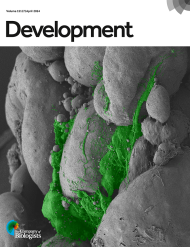Mechanical stresses govern myoblast fusion and myotube growth
Posted on: 29 January 2025 , updated on: 30 January 2025
Preprint posted on 23 November 2024
Muscles in Motion: How Stressful Dance Floors Turn Cells into Synchronized Superstars.
Selected by Vibha SINGH, Prasanna PadmanabanCategories: cell biology
Background and hypothesis.
Myogenesis, the formation of multinucleated myofibers (myotubes), relies on a critical event: myoblast fusion. Imagine building a dance crew where each dancer (your muscle cells, called myoblasts) needs to join hands and form a perfect line (myotube) for the big finale. But here’s the catch: they can only line up and connect at specific spots on the dance floor where the “dance floor pressure” is just right. This study by Yoann Le Toquin et al. reveals that these special spots, like dance floor hotspots, are areas of stress where the cells feel the push and pull of their environment. These stress points act like invitations for the dancers to come together and perform their fusion act. The floor (extracellular matrix: a supportive structure outside the cells) even adjusts to guide the dancers into formation (Figure 1A).
In short, muscle cells don’t just randomly join forces—they are guided by the rhythm of mechanical pressures, ensuring a smooth and well-organized performance that makes muscle growth possible!

Figure 1: (A) Cartoon depiction of the study, highlights the role of stresses for perfect myoblast fusion (generated using ChatGPT 4). (B) Reproduced from Figure 2B. Snapshots of the evolution of the myoblast culture transduced with the lentiviral construct allowing to observe actin (green) and myosin-II (red) cytoskeleton along a 48h period. Close-ups on areas showing fusion events during the time-lapse. White arrowheads indicate the site of fusion characterized by an actin focus preceding cytoskeletal merging and fluorescence mixing.
Although crucial key molecules are well-known, the regulation by the mechanical framework remains unclear in regulating myotube formation. How mechanical tension impacts sarcomeric assembly is well studied, but the precise role of mechanical forces in myoblast fusion and patterning has not been fully explored. Understanding these forces is crucial for decrypting tissue architecture and function. Authors of the preprint demonstrate that myoblast fusion can be explained through active nematics (denoting a state of a liquid crystal in which the molecules are oriented in parallel), where the arrangement of the molecules is linear (Figure 1B). Within this framework, cell behaviors and mechanical stresses govern events of fusion localization. The study also describe that topological defects generate regions of high compressive stress which eventually controls fusion, and the intensity of stress is enhanced as myoblasts differentiate into myotubes. The authors further develop a model connecting cell activity, stress, and ECM dynamics during this process.
Key findings
Muscle cells (myoblasts) don’t just randomly merge to form muscle fibers (myotubes). Instead, they rely on mechanical stresses in their environment to decide where and how to fuse. Think of it as these cells finding the perfect “dance floor hotspots” to come together and grow muscles efficiently.
(a) Observing the Dance Floor. The authors used advanced imaging techniques to track how myoblasts moved, aligned, and fused. They noticed that cells tend to gather and merge in specific areas of high mechanical stress and develop into self-organized domains during their transition to multinucleated myotubes.
(b) Testing the Environment. By manipulating the stiffness of the extracellular matrix (a supportive structure outside the cells) and applying controlled forces, they showed that these stresses directly influenced where fusion occurred. Softer or less stressed areas saw less activity—like a quiet corner of a dance floor. This underlines the importance of evolving mechanical stress in organizing fusion during differentiation.
(c) Topological Defects as Hotspots. Using mathematical models and experiments, they found that cells align in patterns resembling liquid crystals. Fusion happens most actively at special points in these patterns, called topological defects, which are like hotspots for mechanical stress. Comet-shaped (+1/2) and trefoil-like (−1/2) topological defects develop, typical of active nematic systems, driving collective cell organization. This nematic behavior is regulated by actin organization, and inhibition of myosin-II damages the order, which increases defect density. This emphasizes the role of cytoskeleton maturation in self-organization and myoblast fusion.
(d) Looking at the Bigger Picture. The extracellular matrix itself seemed to guide this process. It adjusts and organizes along with the cells, creating an environment where the fusion process can thrive. Further, modelling results discloses defect stabilization, reduce motion, amplify stress intensity, and organize stress patterns over time.
What do we like most about the preprint?
Previous studies focused on biochemical signals driving myoblast fusion. This study shifts the spotlight to mechanical stresses, showing how physical forces organize cell alignment and fusion. The discovery that myoblasts align in liquid crystal-like patterns, with fusion occurring at topological defects (areas of high stress), is a novel and intriguing concept. It’s like uncovering hidden “fusion zones” on the cellular map. The extracellular matrix (ECM) isn’t just a passive structure—it actively participates, aligning and adapting to mechanical forces to guide myoblasts. We like how the authors have successfully assimilated active nematic principles to disclose the link between topological defects and myoblast fusion, offering a novel perspective on the role of mechanics in myogenesis. This two-way interaction between cells and their environment was previously underappreciated.
Significance of the study
Understanding how mechanical stresses guide muscle cell fusion gives us insights into muscle development, tissue repair and formation, and diseases associated with their dysfunction. It could lead to better treatments for muscle-related conditions or improved strategies for tissue engineering. In simple terms, this study shows that building muscles is not just about having the right cells—it’s about creating the perfect environment for them to come together and grow!
Open Questions
1) Does the long-term stability of myotube structures get affected by the mechanical feedback loop between cell-generated forces and ECM reorganization?
2) Do you think the alignment of myoblasts into liquid crystal-like patterns and their fusion at topological defects has evolutionary significance? Could it be a conserved mechanism across species?
3) Was it surprising to find such precise hotspots for fusion at topological defects? Did you observe any variations in these patterns depending on matrix stiffness or external force?
4) If you were to design a therapeutic approach targeting mechanical stress, what aspect would you prioritize: enhancing ECM adaptability, tuning cellular response, or both?
5) Did you notice differences in how individual myoblasts responded to mechanical stress, such as variability in their ability to sense or adapt to stress?
doi: https://doi.org/10.1242/prelights.39556
Read preprintSign up to customise the site to your preferences and to receive alerts
Register hereAlso in the cell biology category:
Dosage-sensitive RBFOX2 autoregulation promotes cardiomyocyte differentiation by maturing the transcriptome
Theodora Stougiannou
ROCK2 inhibition has a dual role in reducing ECM remodelling and cell growth, while impairing migration and invasion
Sharvari Pitke
Aspartate transaminases are required for blood development
Hannah Pletcher
preLists in the cell biology category:
November in preprints – DevBio & Stem cell biology
preLighters with expertise across developmental and stem cell biology have nominated a few developmental and stem cell biology (and related) preprints posted in November they’re excited about and explain in a single paragraph why. Concise preprint highlights, prepared by the preLighter community – a quick way to spot upcoming trends, new methods and fresh ideas.
| List by | Aline Grata et al. |
October in preprints – DevBio & Stem cell biology
Each month, preLighters with expertise across developmental and stem cell biology nominate a few recent developmental and stem cell biology (and related) preprints they’re excited about and explain in a single paragraph why. Short, snappy picks from working scientists — a quick way to spot fresh ideas, bold methods and papers worth reading in full. These preprints can all be found in the October preprint list published on the Node.
| List by | Deevitha Balasubramanian et al. |
October in preprints – Cell biology edition
Different preLighters, with expertise across cell biology, have worked together to create this preprint reading list for researchers with an interest in cell biology. This month, most picks fall under (1) Cell organelles and organisation, followed by (2) Mechanosignaling and mechanotransduction, (3) Cell cycle and division and (4) Cell migration
| List by | Matthew Davies et al. |
September in preprints – Cell biology edition
A group of preLighters, with expertise in different areas of cell biology, have worked together to create this preprint reading list. This month, categories include: (1) Cell organelles and organisation, (2) Cell signalling and mechanosensing, (3) Cell metabolism, (4) Cell cycle and division, (5) Cell migration
| List by | Sristilekha Nath et al. |
July in preprints – the CellBio edition
A group of preLighters, with expertise in different areas of cell biology, have worked together to create this preprint reading lists for researchers with an interest in cell biology. This month, categories include: (1) Cell Signalling and Mechanosensing (2) Cell Cycle and Division (3) Cell Migration and Cytoskeleton (4) Cancer Biology (5) Cell Organelles and Organisation
| List by | Girish Kale et al. |
June in preprints – the CellBio edition
A group of preLighters, with expertise in different areas of cell biology, have worked together to create this preprint reading lists for researchers with an interest in cell biology. This month, categories include: (1) Cell organelles and organisation (2) Cell signaling and mechanosensation (3) Genetics/gene expression (4) Biochemistry (5) Cytoskeleton
| List by | Barbora Knotkova et al. |
May in preprints – the CellBio edition
A group of preLighters, with expertise in different areas of cell biology, have worked together to create this preprint reading lists for researchers with an interest in cell biology. This month, categories include: 1) Biochemistry/metabolism 2) Cancer cell Biology 3) Cell adhesion, migration and cytoskeleton 4) Cell organelles and organisation 5) Cell signalling and 6) Genetics
| List by | Barbora Knotkova et al. |
Keystone Symposium – Metabolic and Nutritional Control of Development and Cell Fate
This preList contains preprints discussed during the Metabolic and Nutritional Control of Development and Cell Fate Keystone Symposia. This conference was organized by Lydia Finley and Ralph J. DeBerardinis and held in the Wylie Center and Tupper Manor at Endicott College, Beverly, MA, United States from May 7th to 9th 2025. This meeting marked the first in-person gathering of leading researchers exploring how metabolism influences development, including processes like cell fate, tissue patterning, and organ function, through nutrient availability and metabolic regulation. By integrating modern metabolic tools with genetic and epidemiological insights across model organisms, this event highlighted key mechanisms and identified open questions to advance the emerging field of developmental metabolism.
| List by | Virginia Savy, Martin Estermann |
April in preprints – the CellBio edition
A group of preLighters, with expertise in different areas of cell biology, have worked together to create this preprint reading lists for researchers with an interest in cell biology. This month, categories include: 1) biochemistry/metabolism 2) cell cycle and division 3) cell organelles and organisation 4) cell signalling and mechanosensing 5) (epi)genetics
| List by | Vibha SINGH et al. |
March in preprints – the CellBio edition
A group of preLighters, with expertise in different areas of cell biology, have worked together to create this preprint reading lists for researchers with an interest in cell biology. This month, categories include: 1) cancer biology 2) cell migration 3) cell organelles and organisation 4) cell signalling and mechanosensing 5) genetics and genomics 6) other
| List by | Girish Kale et al. |
Biologists @ 100 conference preList
This preList aims to capture all preprints being discussed at the Biologists @100 conference in Liverpool, UK, either as part of the poster sessions or the (flash/short/full-length) talks.
| List by | Reinier Prosee, Jonathan Townson |
February in preprints – the CellBio edition
A group of preLighters, with expertise in different areas of cell biology, have worked together to create this preprint reading lists for researchers with an interest in cell biology. This month, categories include: 1) biochemistry and cell metabolism 2) cell organelles and organisation 3) cell signalling, migration and mechanosensing
| List by | Barbora Knotkova et al. |
Community-driven preList – Immunology
In this community-driven preList, a group of preLighters, with expertise in different areas of immunology have worked together to create this preprint reading list.
| List by | Felipe Del Valle Batalla et al. |
January in preprints – the CellBio edition
A group of preLighters, with expertise in different areas of cell biology, have worked together to create this preprint reading lists for researchers with an interest in cell biology. This month, categories include: 1) biochemistry/metabolism 2) cell migration 3) cell organelles and organisation 4) cell signalling and mechanosensing 5) genetics/gene expression
| List by | Barbora Knotkova et al. |
December in preprints – the CellBio edition
A group of preLighters, with expertise in different areas of cell biology, have worked together to create this preprint reading lists for researchers with an interest in cell biology. This month, categories include: 1) cell cycle and division 2) cell migration and cytoskeleton 3) cell organelles and organisation 4) cell signalling and mechanosensing 5) genetics/gene expression
| List by | Matthew Davies et al. |
November in preprints – the CellBio edition
This is the first community-driven preList! A group of preLighters, with expertise in different areas of cell biology, have worked together to create this preprint reading lists for researchers with an interest in cell biology. Categories include: 1) cancer cell biology 2) cell cycle and division 3) cell migration and cytoskeleton 4) cell organelles and organisation 5) cell signalling and mechanosensing 6) genetics/gene expression
| List by | Felipe Del Valle Batalla et al. |
BSCB-Biochemical Society 2024 Cell Migration meeting
This preList features preprints that were discussed and presented during the BSCB-Biochemical Society 2024 Cell Migration meeting in Birmingham, UK in April 2024. Kindly put together by Sara Morais da Silva, Reviews Editor at Journal of Cell Science.
| List by | Reinier Prosee |
‘In preprints’ from Development 2022-2023
A list of the preprints featured in Development's 'In preprints' articles between 2022-2023
| List by | Alex Eve, Katherine Brown |
preLights peer support – preprints of interest
This is a preprint repository to organise the preprints and preLights covered through the 'preLights peer support' initiative.
| List by | preLights peer support |
The Society for Developmental Biology 82nd Annual Meeting
This preList is made up of the preprints discussed during the Society for Developmental Biology 82nd Annual Meeting that took place in Chicago in July 2023.
| List by | Joyce Yu, Katherine Brown |
CSHL 87th Symposium: Stem Cells
Preprints mentioned by speakers at the #CSHLsymp23
| List by | Alex Eve |
Journal of Cell Science meeting ‘Imaging Cell Dynamics’
This preList highlights the preprints discussed at the JCS meeting 'Imaging Cell Dynamics'. The meeting was held from 14 - 17 May 2023 in Lisbon, Portugal and was organised by Erika Holzbaur, Jennifer Lippincott-Schwartz, Rob Parton and Michael Way.
| List by | Helen Zenner |
9th International Symposium on the Biology of Vertebrate Sex Determination
This preList contains preprints discussed during the 9th International Symposium on the Biology of Vertebrate Sex Determination. This conference was held in Kona, Hawaii from April 17th to 21st 2023.
| List by | Martin Estermann |
Alumni picks – preLights 5th Birthday
This preList contains preprints that were picked and highlighted by preLights Alumni - an initiative that was set up to mark preLights 5th birthday. More entries will follow throughout February and March 2023.
| List by | Sergio Menchero et al. |
CellBio 2022 – An ASCB/EMBO Meeting
This preLists features preprints that were discussed and presented during the CellBio 2022 meeting in Washington, DC in December 2022.
| List by | Nadja Hümpfer et al. |
Fibroblasts
The advances in fibroblast biology preList explores the recent discoveries and preprints of the fibroblast world. Get ready to immerse yourself with this list created for fibroblasts aficionados and lovers, and beyond. Here, my goal is to include preprints of fibroblast biology, heterogeneity, fate, extracellular matrix, behavior, topography, single-cell atlases, spatial transcriptomics, and their matrix!
| List by | Osvaldo Contreras |
EMBL Synthetic Morphogenesis: From Gene Circuits to Tissue Architecture (2021)
A list of preprints mentioned at the #EESmorphoG virtual meeting in 2021.
| List by | Alex Eve |
FENS 2020
A collection of preprints presented during the virtual meeting of the Federation of European Neuroscience Societies (FENS) in 2020
| List by | Ana Dorrego-Rivas |
Planar Cell Polarity – PCP
This preList contains preprints about the latest findings on Planar Cell Polarity (PCP) in various model organisms at the molecular, cellular and tissue levels.
| List by | Ana Dorrego-Rivas |
BioMalPar XVI: Biology and Pathology of the Malaria Parasite
[under construction] Preprints presented at the (fully virtual) EMBL BioMalPar XVI, 17-18 May 2020 #emblmalaria
| List by | Dey Lab, Samantha Seah |
1
Cell Polarity
Recent research from the field of cell polarity is summarized in this list of preprints. It comprises of studies focusing on various forms of cell polarity ranging from epithelial polarity, planar cell polarity to front-to-rear polarity.
| List by | Yamini Ravichandran |
TAGC 2020
Preprints recently presented at the virtual Allied Genetics Conference, April 22-26, 2020. #TAGC20
| List by | Maiko Kitaoka et al. |
3D Gastruloids
A curated list of preprints related to Gastruloids (in vitro models of early development obtained by 3D aggregation of embryonic cells). Updated until July 2021.
| List by | Paul Gerald L. Sanchez and Stefano Vianello |
ECFG15 – Fungal biology
Preprints presented at 15th European Conference on Fungal Genetics 17-20 February 2020 Rome
| List by | Hiral Shah |
ASCB EMBO Annual Meeting 2019
A collection of preprints presented at the 2019 ASCB EMBO Meeting in Washington, DC (December 7-11)
| List by | Madhuja Samaddar et al. |
EMBL Seeing is Believing – Imaging the Molecular Processes of Life
Preprints discussed at the 2019 edition of Seeing is Believing, at EMBL Heidelberg from the 9th-12th October 2019
| List by | Dey Lab |
Autophagy
Preprints on autophagy and lysosomal degradation and its role in neurodegeneration and disease. Includes molecular mechanisms, upstream signalling and regulation as well as studies on pharmaceutical interventions to upregulate the process.
| List by | Sandra Malmgren Hill |
Lung Disease and Regeneration
This preprint list compiles highlights from the field of lung biology.
| List by | Rob Hynds |
Cellular metabolism
A curated list of preprints related to cellular metabolism at Biorxiv by Pablo Ranea Robles from the Prelights community. Special interest on lipid metabolism, peroxisomes and mitochondria.
| List by | Pablo Ranea Robles |
BSCB/BSDB Annual Meeting 2019
Preprints presented at the BSCB/BSDB Annual Meeting 2019
| List by | Dey Lab |
MitoList
This list of preprints is focused on work expanding our knowledge on mitochondria in any organism, tissue or cell type, from the normal biology to the pathology.
| List by | Sandra Franco Iborra |
Biophysical Society Annual Meeting 2019
Few of the preprints that were discussed in the recent BPS annual meeting at Baltimore, USA
| List by | Joseph Jose Thottacherry |
ASCB/EMBO Annual Meeting 2018
This list relates to preprints that were discussed at the recent ASCB conference.
| List by | Dey Lab, Amanda Haage |











 (No Ratings Yet)
(No Ratings Yet)